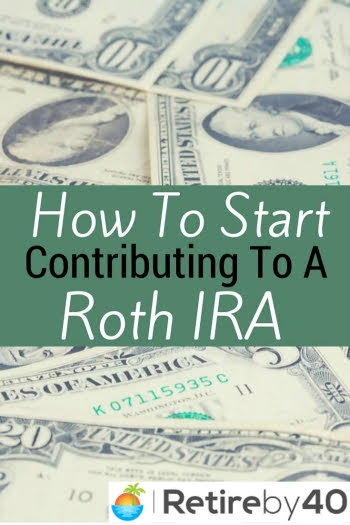
Roth IRA calculator defaults at 6% rate of returns
The default rate of return in the Roth IRA calculator is 6%, but you may want to adjust this to reflect your expected returns. It is important to note that the calculator doesn't account for spouses' employer-sponsored retirement plans. After deductions and income taxes, your account total will include the tax-deductible contributions. It also includes tax savings that you can reinvest.
The Roth IRA calculator also calculates your maximum annual contribution based on your tax filing status. The calculator defaults to 6% so you can easily compare your Roth IRA account balance to retirement and your projected taxable account.
Traditional IRA calculator assumes "Married filing apart"
It is important to determine how much you can contribute each calendar year to a Traditional IRA. The amount you can contribute tax-deferred each fiscal year is determined by your annual income. To maximize your contributions, make sure you're contributing at least the maximum amount each year. This includes a catchup contribution if you are over 50.

If you're married, the traditional IRA calculator assumes that you are "married filing separately," which means that your spouse isn't included on your return. This makes it easier compare IRAs under different tax rules. For example, if you're married and making a single contribution, you may find that your IRA contribution will be taxed as one deduction rather than two.
SEP IRAs have no catch-up contribution
SEP IRAs are not allowed to allow catch-up contributions, unlike traditional IRAs. Some employers might allow catch-up contribution if their employees make a traditional IRA donation. The amount of employees' compensation during the year is the limit for the catch-up contribution.
To qualify, you must have earned more than $100,000 in the previous year. The amount you can contribute to the catch-up fund is determined by your salary or your employer. This catch-up contribution is not required to be made in the following year. You can make catchup contributions for those under 50. However you will need the funds to be withdrawn before you reach 70 1/2. SEP IRAs can't make loans. Uni-K plans may allow loans but the IRS has strict guidelines. Additionally, some plans have an administrative fee for loan initiation.
IRAs are tax-deferred
An IRA offers the main advantage of not having to pay tax on earnings or withdrawals unless you sell your investment. You can also sell investments that have appreciated in price without having to pay capital gains tax. You may need to pay transaction fees if you decide to sell. This makes asset allocation and asset diversification important. Avoid investing all your money in stocks or cash as inflation can quickly erode the value of your investments.

Traditional IRAs let you deduct your contributions as long as they are less than the amount of the contribution. These deductions, however, are limited and will decrease as your income grows. Employers typically offer a qualified IRA-qualified retirement plan. If your workplace does not offer a retirement plan, you may be able to take advantage by contributing to an IRA. This deduction is only available to those who have an adjusted gross income less than $65,000
In retirement, IRA distributions can be tax-free
Traditional IRAs are an excellent way to accumulate tax deferred retirement savings. Contributions are made on pre-tax basis and withdrawals can be taken without tax if you are older than 59 1/2. Withdrawals are subject to certain guidelines. One of these rules is to withdraw no less than 10% of the account's total value each year. Infractions to these rules may result in a 50% Tax on the withdrawal amount.
You should be able to understand the IRA distributions process if you're under the age of 59 1/2. For example, suppose you are taking a $10,000 distribution from your IRA each year. This withdrawal is tax-free for the first 120 days. After that, you will need to wait at most 120 days before changing your payments.
FAQ
What is wealth management?
Wealth Management can be described as the management of money for individuals or families. It encompasses all aspects financial planning such as investing, insurance and tax.
How old can I start wealth management
Wealth Management is best when you're young enough to reap the benefits of your labor, but not too old to lose touch with reality.
The sooner you invest, the more money that you will make throughout your life.
You may also want to consider starting early if you plan to have children.
You could find yourself living off savings for your whole life if it is too late in life.
What Are Some Benefits to Having a Financial Planner?
A financial plan will give you a roadmap to follow. You won't be left wondering what will happen next.
It provides peace of mind by knowing that there is a plan in case something unexpected happens.
A financial plan can help you better manage your debt. You will be able to understand your debts and determine how much you can afford.
Protecting your assets will be a key part of your financial plan.
What is retirement planning?
Financial planning does not include retirement planning. You can plan your retirement to ensure that you have a comfortable retirement.
Retirement planning is about looking at the many options available to one, such as investing in stocks and bonds, life insurance and tax-avantaged accounts.
Statistics
- According to a 2017 study, the average rate of return for real estate over a roughly 150-year period was around eight percent. (fortunebuilders.com)
- A recent survey of financial advisors finds the median advisory fee (up to $1 million AUM) is just around 1%.1 (investopedia.com)
- As of 2020, it is estimated that the wealth management industry had an AUM of upwards of $112 trillion globally. (investopedia.com)
- As previously mentioned, according to a 2017 study, stocks were found to be a highly successful investment, with the rate of return averaging around seven percent. (fortunebuilders.com)
External Links
How To
How to Invest your Savings to Make Money
Investing your savings into different types of investments such as stock market, mutual funds, bonds, real estate, commodities, gold, and other assets gives you an opportunity to generate returns on your capital. This is known as investing. You should understand that investing does NOT guarantee a profit, but increases your chances to earn profits. There are various ways to invest your savings. One of these options is buying stocks, Mutual Funds, Gold, Commodities, Real Estate, Bonds, Stocks, ETFs, Gold, Commodities, Real Estate, Bonds, Stocks, Real Estate, Bonds, and ETFs. These are the methods we will be discussing below.
Stock Market
Stock market investing is one of the most popular options for saving money. It allows you to purchase shares in companies that sell products and services similar to those you might otherwise buy. Additionally, stocks offer diversification and protection against financial loss. In the event that oil prices fall dramatically, you may be able to sell shares in your energy company and purchase shares in a company making something else.
Mutual Fund
A mutual funds is a fund that combines money from several individuals or institutions and invests in securities. They are professional managed pools of equity or debt securities, or hybrid securities. The mutual fund's investment goals are usually determined by its board of directors.
Gold
It has been proven to hold its value for long periods of time and can be used as a safety haven in times of economic uncertainty. It is also used in certain countries to make currency. Gold prices have seen a significant rise in recent years due to investor demand for inflation protection. The supply-demand fundamentals affect the price of gold.
Real Estate
Real estate refers to land and buildings. Real estate is land and buildings that you own. Rent out part of your home to generate additional income. You can use your home as collateral for loan applications. The home could even be used to receive tax benefits. Before buying any type property, it is important to consider the following things: location, condition and age.
Commodity
Commodities refer to raw materials like metals and grains as well as agricultural products. These items are more valuable than ever so commodity-related investments are a good idea. Investors who want capital to capitalize on this trend will need to be able to analyse charts and graphs, spot trends, and decide the best entry point for their portfolios.
Bonds
BONDS can be used to make loans to corporations or governments. A bond is a loan where both parties agree to repay the principal at a certain date in exchange for interest payments. When interest rates drop, bond prices rise and vice versa. Investors buy bonds to earn interest and then wait for the borrower repay the principal.
Stocks
STOCKS INVOLVE SHARES OF OWNERSHIP IN A CORPORATION. A share represents a fractional ownership of a business. If you own 100 shares, you become a shareholder. You can vote on all matters affecting the business. You also receive dividends when the company earns profits. Dividends refer to cash distributions made to shareholders.
ETFs
An Exchange Traded Fund is a security that tracks an indice of stocks, bonds or currencies. ETFs can trade on public exchanges just like stock, unlike traditional mutual funds. The iShares Core S&P 500 (NYSEARCA - SPY) ETF is designed to track performance of Standard & Poor’s 500 Index. This means that if SPY is purchased, your portfolio will reflect the S&P 500 performance.
Venture Capital
Venture capital is private financing venture capitalists provide entrepreneurs to help them start new businesses. Venture capitalists lend financing to startups that have little or no revenue, and who are also at high risk for failure. Usually, they invest in early-stage companies, such as those just starting out.